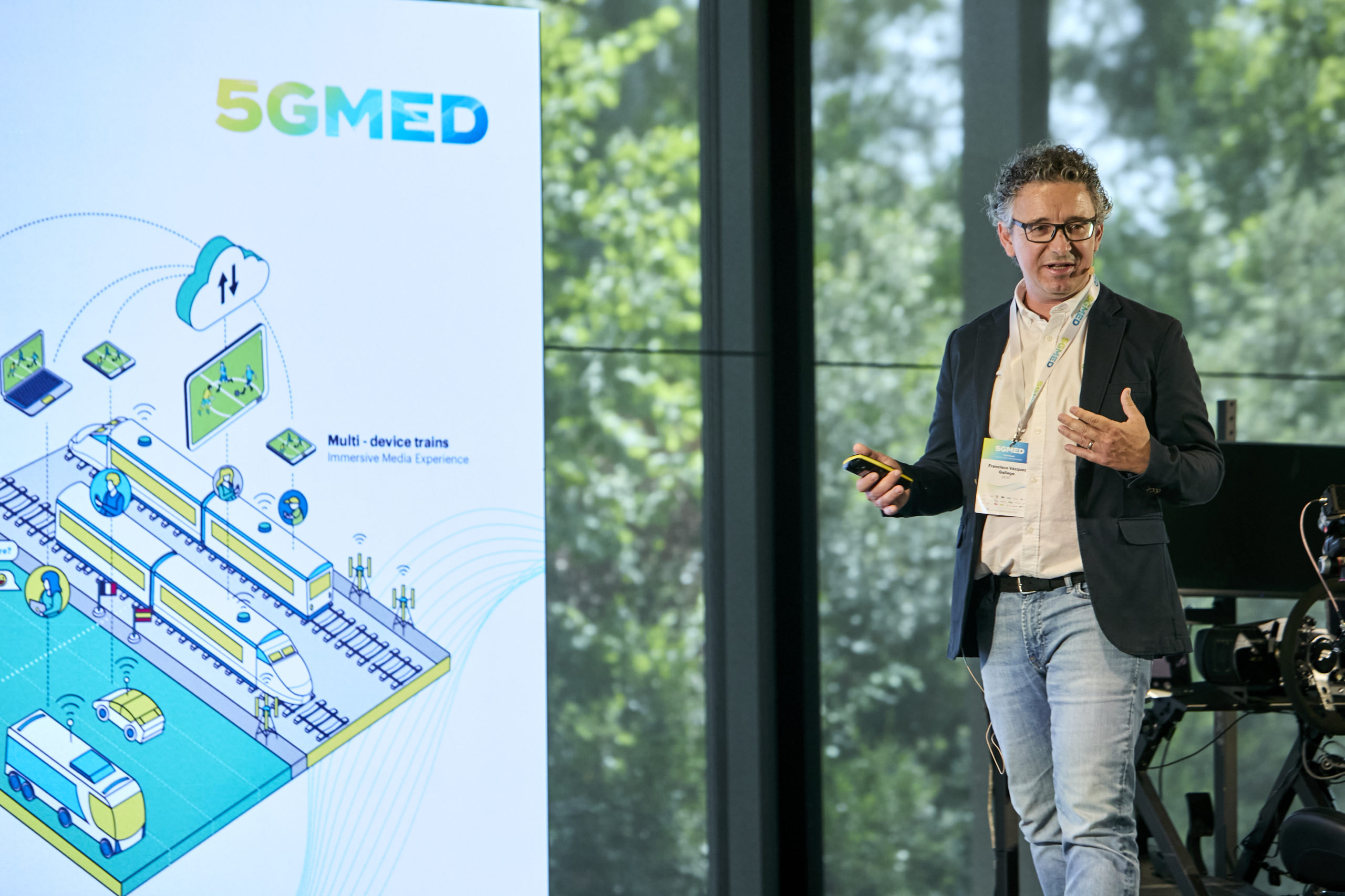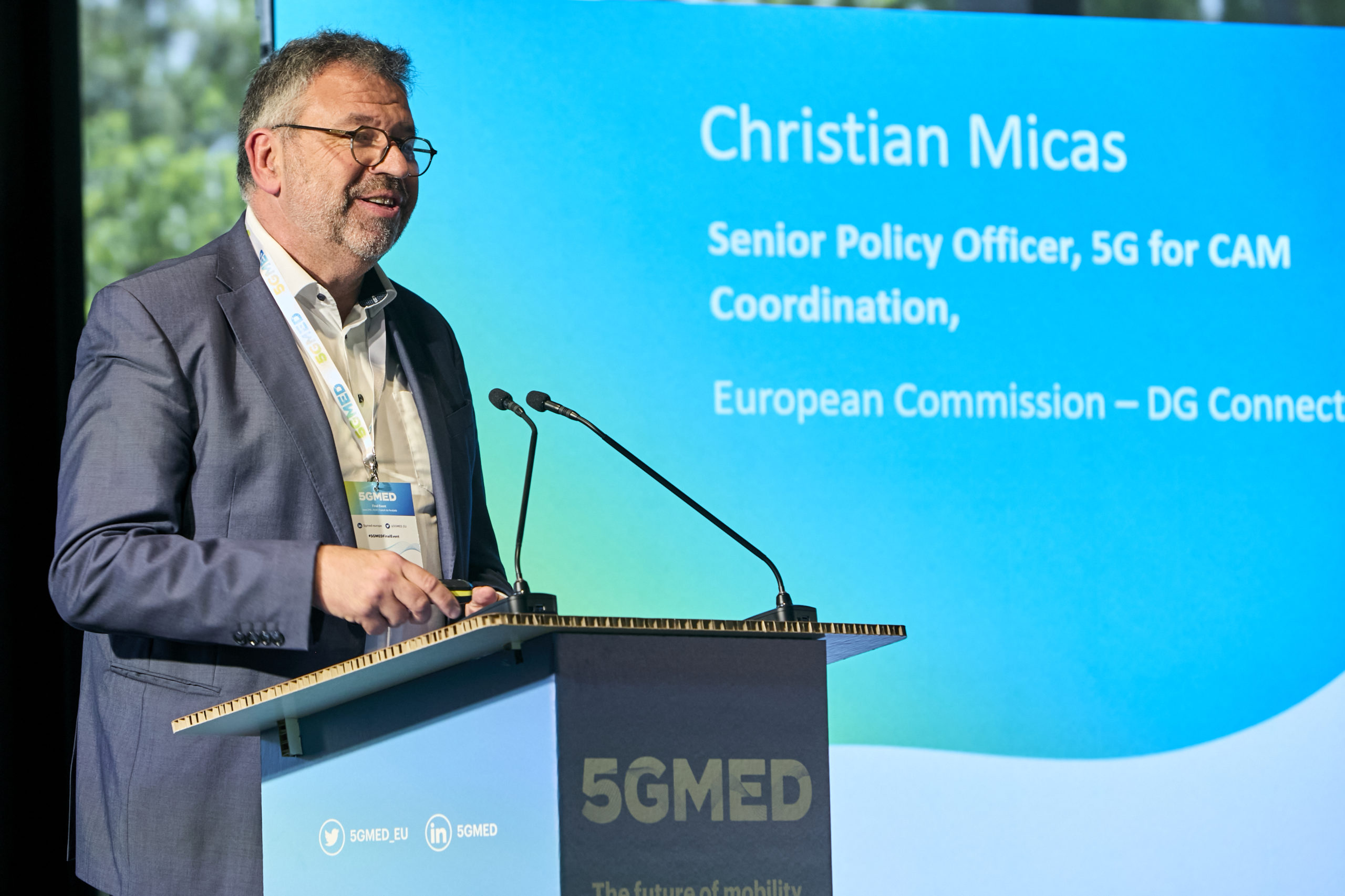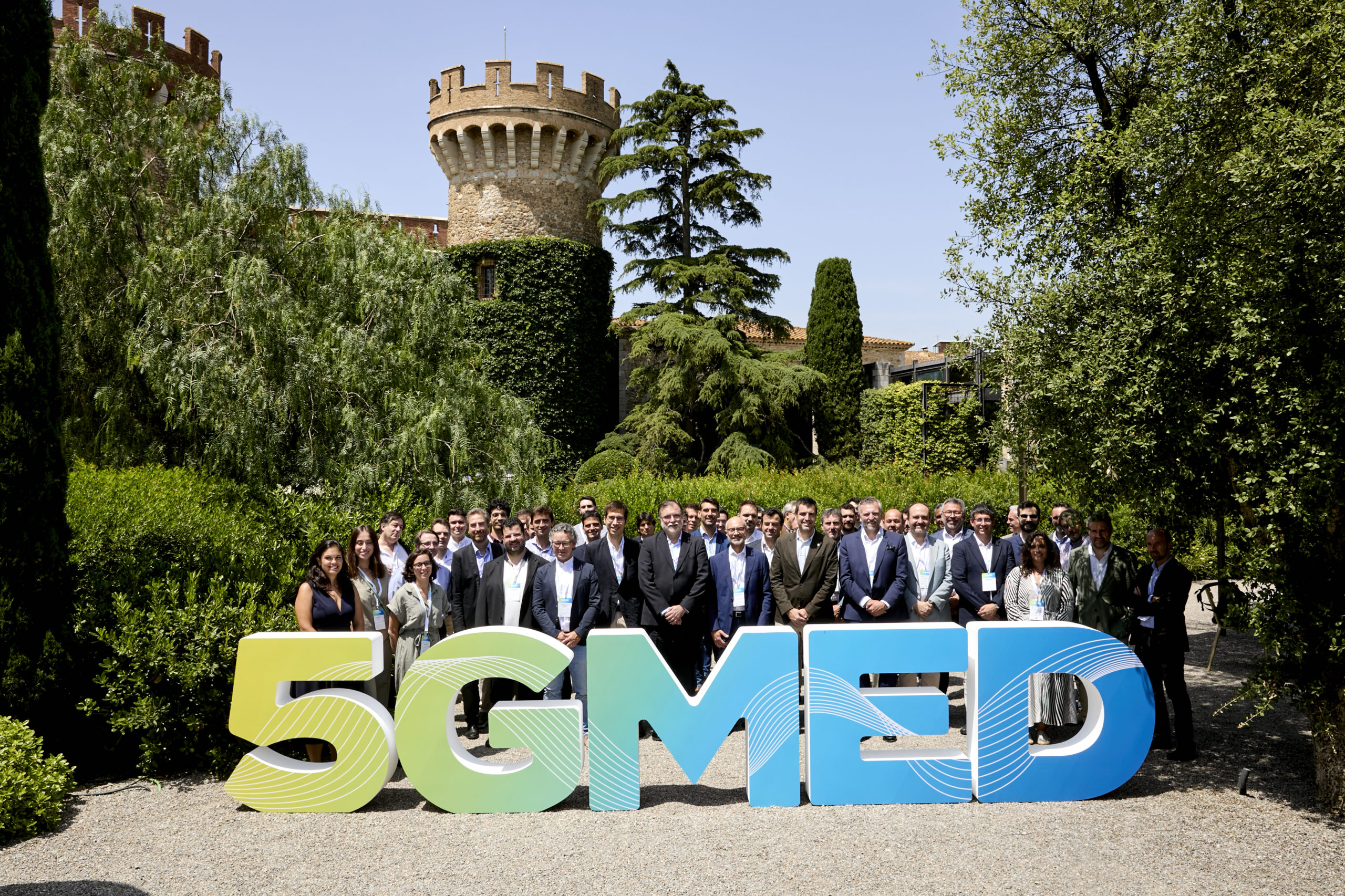
Keep up to date with our innovative initiatives.
Sign up here
Last Thursday, June 26th, the Castell de Peralada (Girona) hosted the Final Public Event of the Horizon 2020 research project 5GMED to present the conclusions of the four-year project, oriented at designing and implementing a cross-border technological architecture between Spain and France that allows uninterrupted high-speed communications on both roads and railways. i2CAT participated as the Technical Coordinator of this European research project that lays the foundations for a seamless road and rail communications architecture between Spain and France to overcome the current roaming configuration at the border, which causes communication cuts of up to more than one minute when changing countries.
The event started with the welcome session, followed by the round table «The future of connected mobility in Europe,» which brought together Antonio Muruais, sub-director of Sustainability and Innovation of the Spanish Ministry of Transport and Sustainable Mobility; Sergi Sarri, Tech Innovation Specialist at Mobile World Capital; Manuel Alfageme, Head of Smart Systems Innovation Unit at COMSA; and Sergi Figuerola, director of i2CAT. TV3 journalist Ruth Gumbau moderated the session. «5GMED is an example of cooperation in the field of connectivity. We are facing a new scenario and need all the value chain members. If we cannot align all of them, we will fail to achieve a new connected mobility paradigm», explained Sergi Figuerola.

Afterwards, José López Luque, the 5GMED coordinator and Senior Innovation Programme Manager at Cellnex, and Francisco Vazquez Gallego, the project’s technical coordinator and i2CAT’s V2X research line manager, intervened to present the project’s main results. «Thanks to 5GMED, connected vehicles and trains across Europe will seamlessly traverse international borders, ensuring road safety and traffic efficiency», stressed Francisco Vázquez. During the Final Public Event, researchers successfully performed the 5GMED set of use cases to represent the challenges related to both cooperative, connected and automated mobility and rail applications.

Christian Micas, Senior Policy Officer (5G for CAM Coordination) at the European Commission—DG CONNECT—also participated in the event to highlight the 5GMED project’s contribution to the future of mobility in Europe. «5G is a key enabler for connected and automated mobility», he said. Likewise, Marc Realp, Secretary of Telecommunications and Digital Transformation of the Generalitat of Catalunya, highlighted the importance of projects like 5GMED to allow Catalonia to become a digital hub in Europe and contribute to future mobility.

Project overview
5GMED aims to accelerate large-scale deployments of 5G and other technologies along European corridors and to demonstrate sustainable business models for the connected and automated mobility of the future.
With a total investment of 16 million euros, 75% of which has been funded by the European Commission, the project runs from September 2020 to September 2024. It tests a wide range of technologies beyond 5G, including on-board sensors, to provide advanced connectivity services in a scalable and replicable way along transport routes.

The project consortium, led by Cellnex Telecom and with i2CAT as Technical Coordinator, is composed of 21 partners from 7 countries, including prominent entities from the telecommunications, transport, technology, research and consultancy sectors such as Mobile World Capital Barcelona, Hispasat, Abertis Autopistas, SNCF and Vodafone.
Public administrations in both countries, such as the Occitania Region and the Government of the Generalitat de Catalunya, support the project. These administrations have been driving the 5G corridor initiative since its inception.
A step forward in the EU roadmap
The 5GMED project is aligned with the European Union’s objectives for 5G deployment, particularly the targets set out in the 5G Action Plan and the Digital Decade Communication, which aim for full 5G deployment by 2030.

5GMED is the initiative corresponding to the Mediterranean Corridor—through which 55% of road traffic and 65% of rail traffic between Spain and France pass—and the only one that has brought together road and rail use cases under the same project. In other European corridors, tests linked to transporting goods by lorry or sea have been promoted, such as the 5GBlueprint or 5GRail project.
5GMED can potentially serve as a model for similar initiatives in other regions and countries. The challenges and solutions addressed by the project, from reducing downtime for connected and autonomous vehicles to improving rail communications, have implications beyond the Mediterranean Corridor. This paves the way for smoother and safer movement of people and goods and lays the foundation for more sustainable and interconnected transport systems worldwide.